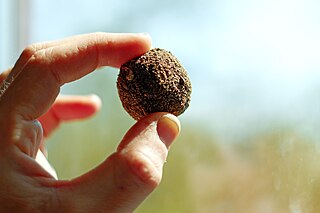
Robohub.org
Pushing Back Deserts through Aerial Seeding

Source — License — Photo unmodified from original.
Start with a seed ball, containing seeds of one or more drought tolerant plants.
Next assemble some feathers or vanes, rather like those found on a badminton shuttlecock, but with an adaxial (inner) surface that is both a good radiator of thermal energy and hydrophobic, or having a branching network of hydrophobic veins which converge at the stem end.
Attach the feathers/vanes to the seed ball to form a seed bomb, and experiment iteratively to refine the design. The combination of mass and terminal velocity in free fall must be such that the seed bomb will penetrate dry clay soil surfaces sufficiently to anchor itself against wind, and the feathers or vanes should open up like a flower upon impact and remain in that configuration thereafter. This may require spring-loaded anchors that are triggered by the impact, to keep winds from tearing the seed bomb loose from the soil by its feathers/vanes.
Equip an aircraft with sensors that enable automatic determination of whether there are any people, domestic animals, or wildlife below and use this information to avoid harming them by interrupting the release of seed bombs. Drop the seed bombs near the desert’s edge, where there is occasional rainfall, but not enough to support grazing, much less agriculture. Where there is enough rainfall to support grazing, a different type of seed bomb should be used.
Even without precipitation, so long as there is some humidity in the air, condensation (dew) will collect on the inner, now upward-facing radiative surfaces of feathers/vanes, from where it will run down towards the seed ball due to their hydrophobic character.
In this manner, it should be possible to establish greenery at the edge of a desert, with the effect of locally altering the climate, perhaps enough so that a few years later another swath, closer to the center of the desert, can be seeded.


